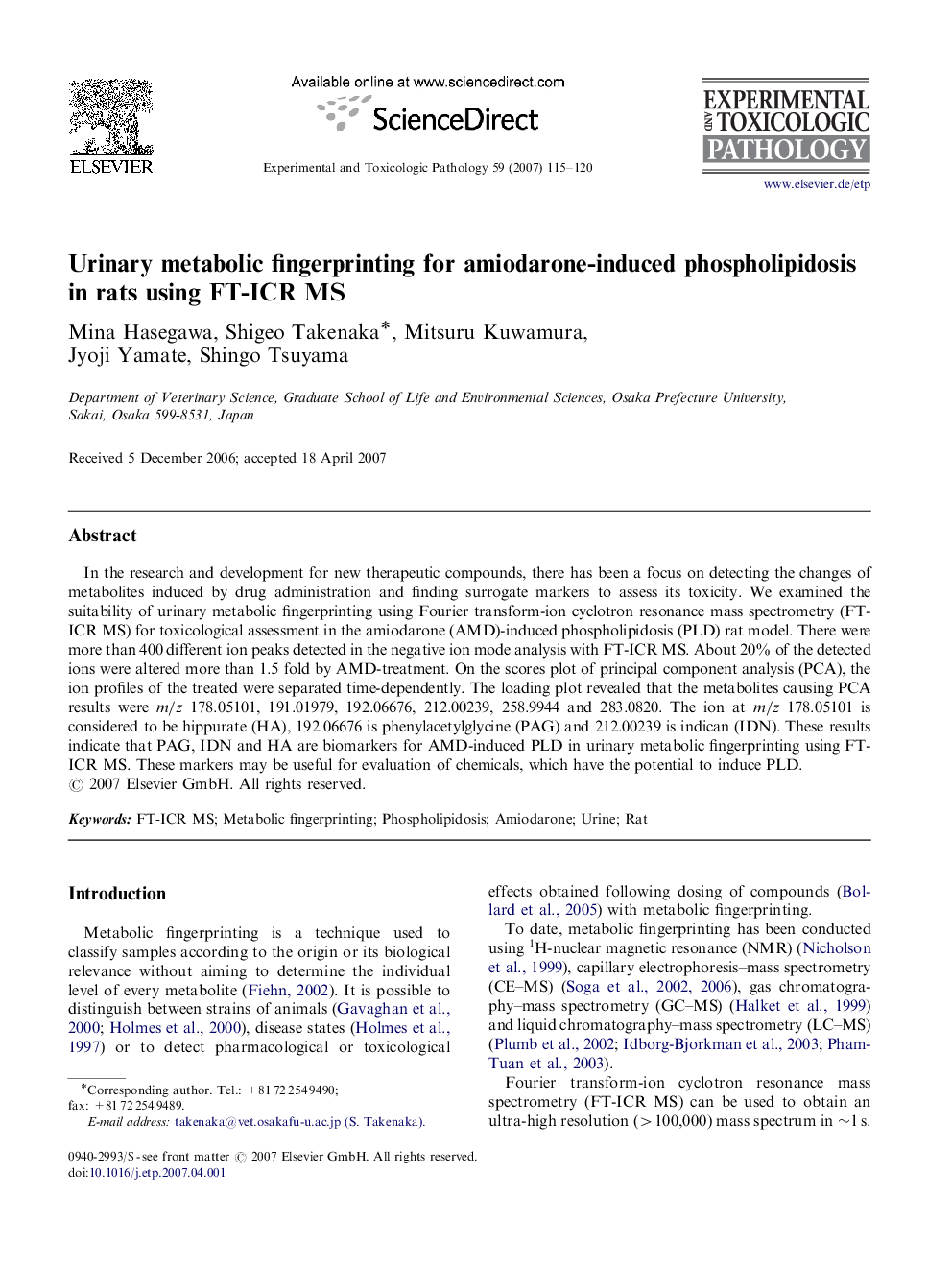| Article ID | Journal | Published Year | Pages | File Type |
|---|---|---|---|---|
| 2499837 | Experimental and Toxicologic Pathology | 2007 | 6 Pages |
In the research and development for new therapeutic compounds, there has been a focus on detecting the changes of metabolites induced by drug administration and finding surrogate markers to assess its toxicity. We examined the suitability of urinary metabolic fingerprinting using Fourier transform-ion cyclotron resonance mass spectrometry (FT-ICR MS) for toxicological assessment in the amiodarone (AMD)-induced phospholipidosis (PLD) rat model. There were more than 400 different ion peaks detected in the negative ion mode analysis with FT-ICR MS. About 20% of the detected ions were altered more than 1.5 fold by AMD-treatment. On the scores plot of principal component analysis (PCA), the ion profiles of the treated were separated time-dependently. The loading plot revealed that the metabolites causing PCA results were m/z 178.05101, 191.01979, 192.06676, 212.00239, 258.9944 and 283.0820. The ion at m/z 178.05101 is considered to be hippurate (HA), 192.06676 is phenylacetylglycine (PAG) and 212.00239 is indican (IDN). These results indicate that PAG, IDN and HA are biomarkers for AMD-induced PLD in urinary metabolic fingerprinting using FT-ICR MS. These markers may be useful for evaluation of chemicals, which have the potential to induce PLD.
